How to Make Your Workplace More Inclusive
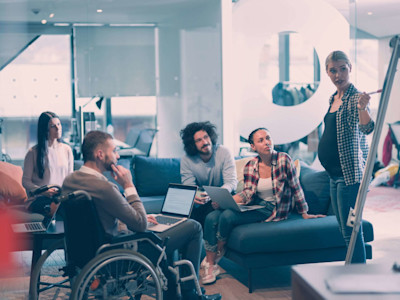
Creating an inclusive workplace for those with disabilities means limiting the impact that their differences have on their work. Trying to work with a disability in a traditional office setting can present its fair share of obstacles. An inclusive workspace aims to eliminate or reduce barriers by providing seating, workstations, and access to resources they otherwise wouldn’t be able to use. In this article, we will explain why an inclusive workplace is important and how to make your workplace more inclusive. The obstacles that a traditional space may create can lead to additional distractions. Unnecessary attention, time spent adapting to a workplace, and stigmas surrounding disabilities may be amplified. These barriers and distractions are avoided, however, by creating a more inclusive workplace.
Becoming an inclusive workplace requires understanding disabilities and which tools are necessary for helping workers excel.
Furniture, technology, and office layouts are among some of the most common issues faced in a non-inclusive workplace. Making minimal changes to a workplace might go unnoticed to most workers but the difference it can make to those with disabilities can change their work experience entirely. Those with disabilities should have the same opportunities for growth as everyone else. An inclusive workplace can help level the office playing field and allow all workers to succeed. An inclusive workplace doesn’t necessarily mean providing accommodations to employees as needed. A truly inclusive workplace should be a workplace environment that those with disabilities can step right into and begin their journey like everyone else.
Difficulties People with Disabilities Face in the Workplace
It’s important to realize the hurdles that people with disabilities have to overcome. Stepping into a new workplace can be difficult but having differences can make the process even more challenging. Non-inclusive workplaces may be difficult for some to adapt to and without sufficient accommodations, it might be impossible. Adaptive furniture, technology, and layout can help limit the subsequent effects and make it easier for a worker to step into a new role. Workers with disabilities may have a hard time making use of traditional resources. This can result in an uncomfortable working environment both physically and mentally. Desks, computers, and chairs might be hard to access for people with physical disabilities while people with sensory issues might find it difficult to work in certain environments. Inclusive resources help workers adapt and help workers overcome struggles they may face. Creating an inclusive workplace can help eliminate the difficulties workers face.
Sensory and Behavioral Disabilities
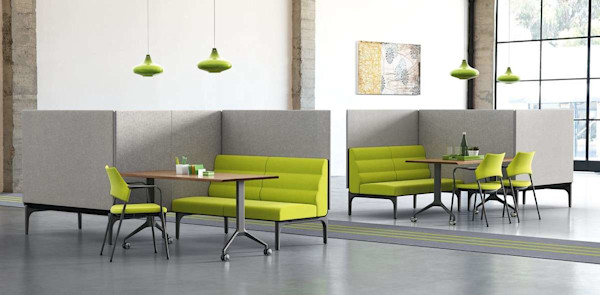
Starting at a new workplace can be difficult but having differences can make the transition even more challenging.
In some instances, however, workers might be over-sensitive to noise. In response, an office can implement acoustic furniture or paneling in order to dampen noise. This can help reduce the impact of excessive auditory stimulation. Additionally, for those that experience difficulties processing information, specialized software helps workers receive and process information more easily. There are tools and resources to help workers with virtually any disability adapt to the workplace. Becoming an inclusive workplace requires understanding disabilities and which tools are necessary for helping workers excel.
How Furniture Can Make a Difference
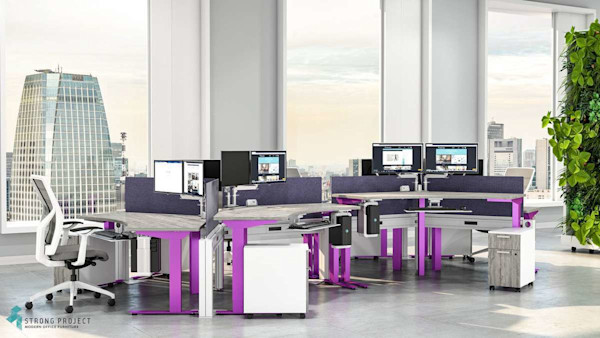
An inclusive workspace aims to eliminate or reduce barriers by providing seating, workstations, and access to resources they otherwise wouldn’t be able to use.
The issues that people with disabilities might face extend beyond their inability to use traditional furnishings. Disabilities can create self-confidence issues. For example, worry about how they are viewed by others, and anxiety can all be a result of dealing with disabilities in the workplace. Including something as simple as inclusive office furniture can minimize these issues that extend beyond their differences.
What Does an Inclusive Workplace Look Like?
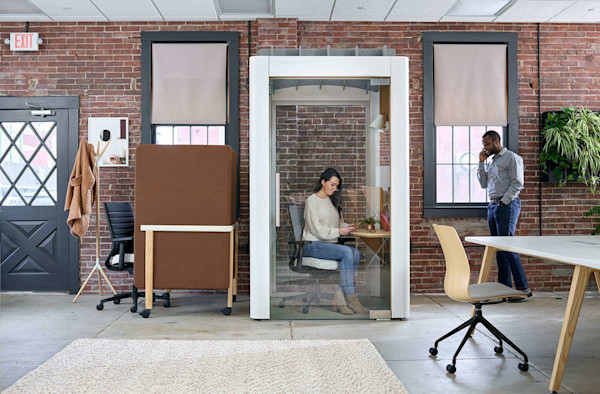
When designing an inclusive office layout it’s important to keep in mind the potential limitations a worker might have.
Open office layouts, easy-to-use furniture, and technology should all be considered and available to workers. An inclusive workplace should make their disability an afterthought in their work life. An inclusive workplace is an environment that removes the obstacles associated with disabilities. Particularly, remove physical and professional barriers and give people with disabilities the same opportunities for professional growth as others. Inclusivity allows workers to be themselves and work to the best of their ability despite the challenges they may deal with.
Inclusive Furniture
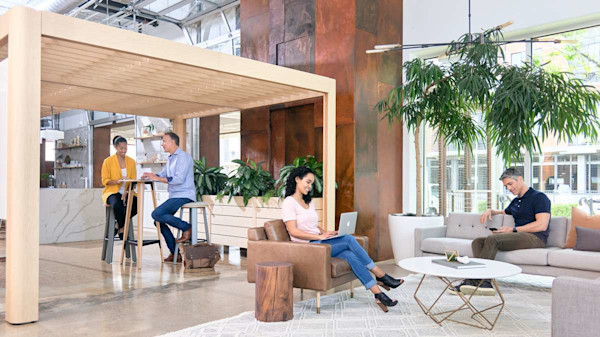
When creating an inclusive workplace it’s important to consider all differences you might encounter.
Other inclusive desks include built-in handles to help workers lift themselves up or move from a wheelchair to a more traditional desk chair. The push of a button adjusts these features with ease. Desks with these features allow people with disabilities to work without additional accommodations. A worker’s work surface is one of the most important things. Desks with these small adaptations can help provide everyone with the same workplace. Adjustable work surfaces extend into cubicles, conference rooms, and breakroom tables. Providing adjustable workstation solutions of all types creates easier access to standard accommodations. Inclusivity is more than just providing options. Inclusivity means providing people with disabilities all of the same opportunities.
Adaptive Seating Solutions
In addition to work surfaces, seating can be just as important. Adaptive seating is a great solution for people with many different disabilities. From people dealing with paralysis to muscle weakness to ALS, adaptive seating solutions can offer added support and increased mobility. Any disability that inhibits a worker’s range of motion, strength, or posture can be addressed by utilizing adaptive seating. Adaptive seating solutions can adjust in height, help workers move about, or raise and tilt to help a worker stand up out of their chair. Changes in working surfaces and seating can address and provide solutions for many physical disabilities. Whether the disability is permanent or a worker may be learning how to deal with a temporary disability, these adaptive tools can give workers the chance to perform at the same level as everyone else.
Inclusive Office Layouts

Why an Inclusive Workplace is Important
Workers with disabilities are entitled to the same accommodations as those without disabilities. Providing workers with the necessary tools to do their job is important. Everybody deserves an environment designed for success. Workers with disabilities shouldn’t have to overcome additional obstacles to perform the same work as others. A worker’s disabilities shouldn’t interfere with their work. And it is your job as an organization to ensure that your workplace layout and amenities don't either. By properly equipping workers with the tools and resources to do their jobs, you are creating an inclusive workplace. Interested in an office redesign? Want to learn more about creating an inclusive office? Contact StrongProject today!



